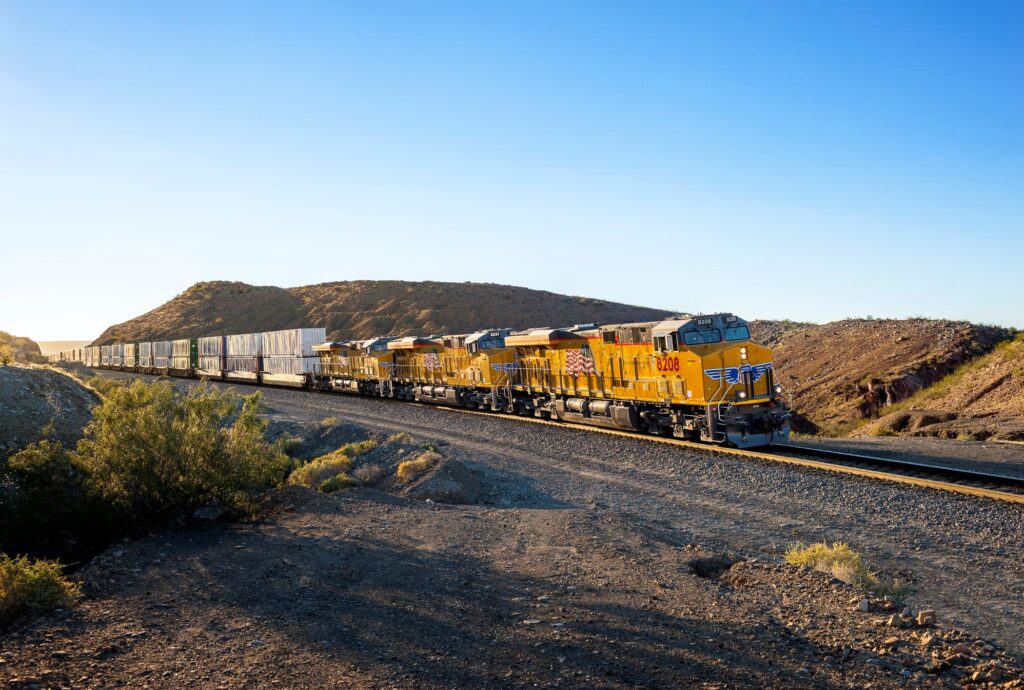New Mexico’s Borderplex region around the Santa Teresa Port of Entry, opened in 1993, is quickly becoming a new epicenter for global trade.
In 2009, Taiwanese contract manufacturer Foxconn built a 1.5-million-square-foot computer plant in San Jeronimo, just across the border from Santa Teresa. The facility can produce 70,000 computers each day. Foxconn employs a system in which third-party logistical operations on the U.S. side consolidate components it needs to make those computers, making it a significant contributor to growth in Santa Teresa of Foxconn suppliers.
Union Pacific (UP) realized the potential of the region and made a $400 million investment in 2014, constructing an Intermodal Facility to serve the area. The facility is located on UP’s Sunset Route between Los Angeles and Houston and includes a refueling station and maintenance, service, and transloading facilities. UP’s investment has also drawn companies doing business with the railroad to Santa Teresa. In 2019, Union Pacific invested an additional $20 million to construct an added block sway yard.
Today the Borderplex region, which surrounds the port and is comprised of the Las Cruces and El Paso MSAs (Metropolitan Statistical Areas) and Cuidad Juárez, Mexico, is home to 2.5 million people. A federal feasibility study released in March 2024 provides a vision to expand the port to 15 commercial lanes (it currently has three) and 11 passenger lanes from Mexico, along with five southbound lanes and expanded inspection bays for commercial trucks.
Over the last five years, the State of New Mexico has prioritized the Borderplex with infrastructure investments. To date, $60 million has been spent.
The impact of these investments can be seen in the data. Between 2005 and 2020, commercial truck crossings quadrupled, and the region continues to grow.
Hota Industrial Manufacturing is investing nearly $72 million and will employ 350. Franklin Mountain Packaging is also manufacturing in the Borderplex.
The climate in the border region is perfect for cultivation, making it a great place for food processing. Two examples are Louisiana Pepper Exchange and ORO LLC.
Other new companies include Aries Worldwide Logistics, Pedraza Customhouse Brokers, and Coast Aluminum.
There are many more advantages offered by the Borderplex that contribute to these successes:
- Two railroads serve the Borderplex. Burlington Northern Santa Fe runs north connecting to its Transcon Corridor and Union Pacific runs east to Houston and west to Los Angeles/Long Beach.
- Interstate 10 connects the Borderplex to both east and west coasts.
- The 12-mile overweight cargo zone surrounding the Santa Teresa POE (Port of Entry) saves money and time.
- The United States-Mexico-Canada Agreement (USMCA) provides companies with securities not afforded companies doing business in China (especially Intellectual Property (IP)). China’s IP theft costs the US hundreds of millions each year (Source: Commission on the Theft of American IP).
- The workforce pipeline includes 125,000 students at post-secondary institutions.
- Both El Paso and Las Cruces offer Foreign Trade Zones.
- Despite the rapid growth, wait times at the port remain around 30 minutes.
The Santa Teresa POE is now ranked the 6th fastest growing of the 167 land ports in the country. The port facilitates over $31 billion in trade annually, representing a significant contribution toward diversifying the state’s economy. All indications are that this will continue.
Sources:
Border Industrial Association



